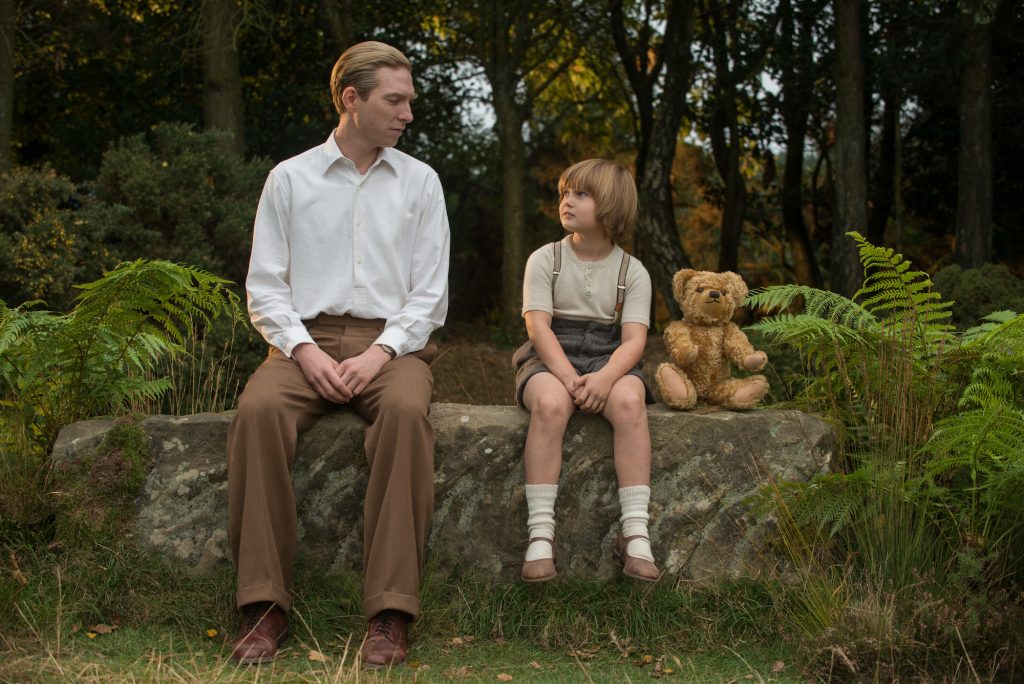
Domhnall Gleeson and Will Tilston in Goodbye Christopher Robin. (Photo courtesy: Twentieth Century Fox)
Screenwriter Frank Cottrell Boyce is known for powerful films like Hilary and Jackie, Welcome to Sarajevo, and for writing the London 2012 Olympic Opening Ceremony: Isles of Wonder, where Queen Elizabeth appeared to skydive into the arena with James Bond.
Boyce’s latest film is Goodbye Christopher Robin and tells the true story of Winnie-the-Pooh author AA Milne (Domhnall Gleeson) and his son, Christopher Robin (Will Tilston).
While Boyce shares the writing credit with Simon Vaughn, Boyce says, “Simon will tell you this himself, he’s not really a screenwriter, but he laid out the story. I took off and did it by myself based on the territory he staked out.”
Turns out that territory was very fertile ground for a family drama with strong archetypal characters – something surprising for a true story.
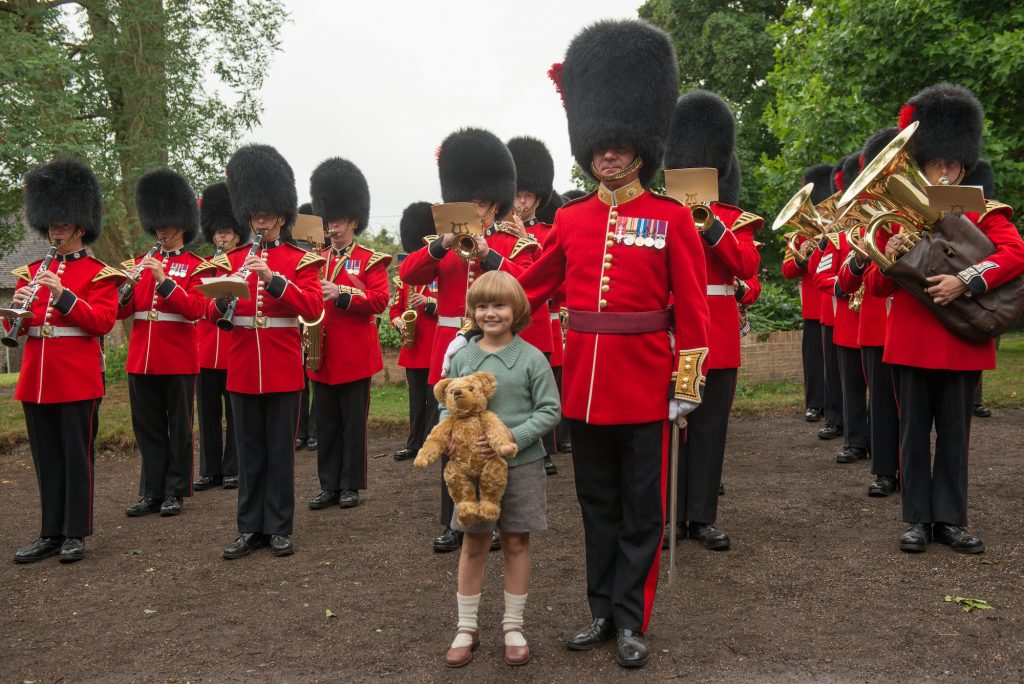
(Photo courtesy: Twentieth Century Fox)
What are archetypes? They are universal, mythic characters, popularized by psychologist Carl Jung, who believed a specific set of characters existed in our collective unconscious because the same characters recur in stories from all time periods and cultures. The most popular archetypes include the hero, the trickster and the wise old woman.
Conversing via telephone from Boyce’s home in England, Boyce and I discussed the film’s characters and their archetypes.
Spoilers ahead.
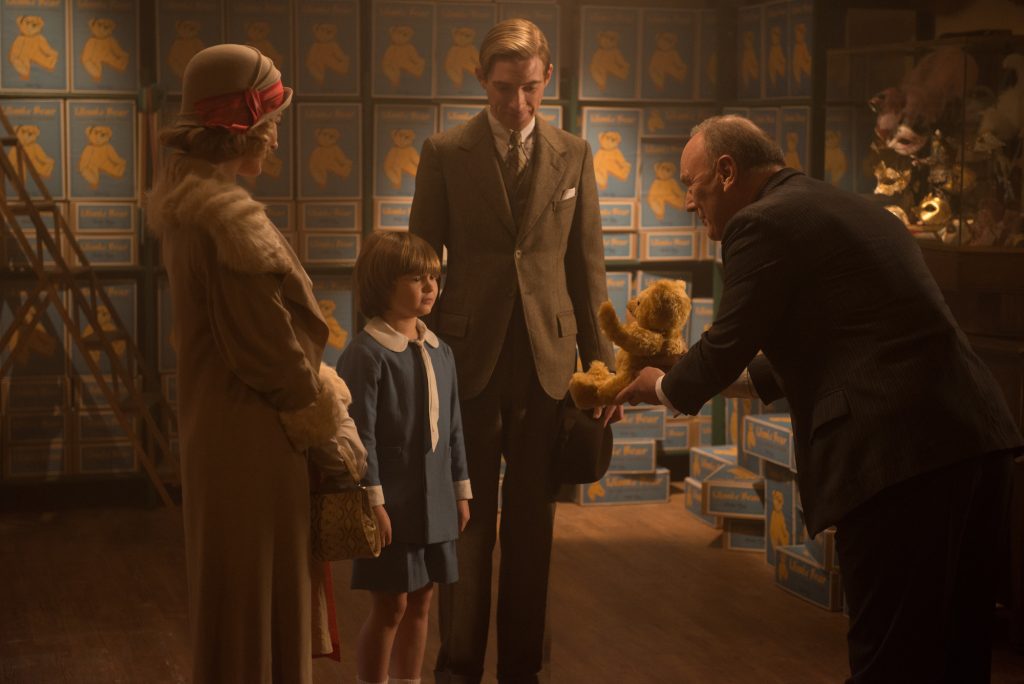
Domhnall Gleeson plays Alan Milne. (Photo courtesy: Twentieth Century Fox)
AA Milne as Odysseus
Playwright AA Milne returns from World War 1 “shellshocked” as they used to say before we had the term PTSD. He suffers from panic attacks, foul moods and writer’s block. The fact that his shallow yet beautiful wife Daphne (Margot Robbie) has little sympathy for him doesn’t help. She tells him, “If you don’t think about dreadful things, they cease to exist.” Sadly, she’s not correct.
“Honestly,” says Boyce, “I thought I was writing a biopic about Milne but those other archetypal stories came to the fore, like Odysseus. I’m fascinated by The Odyssey because it just always seems so relevant. It’s one of the oldest stories we’ve got! If you want to come home from the war, it’s going to take you ten years and you’ll have to beat a lot of monsters before you can be back in your bed.”
Other films with the Odysseus archetype include Born on the Fourth of July, Coming Home and the upcoming Thank You for Your Service.
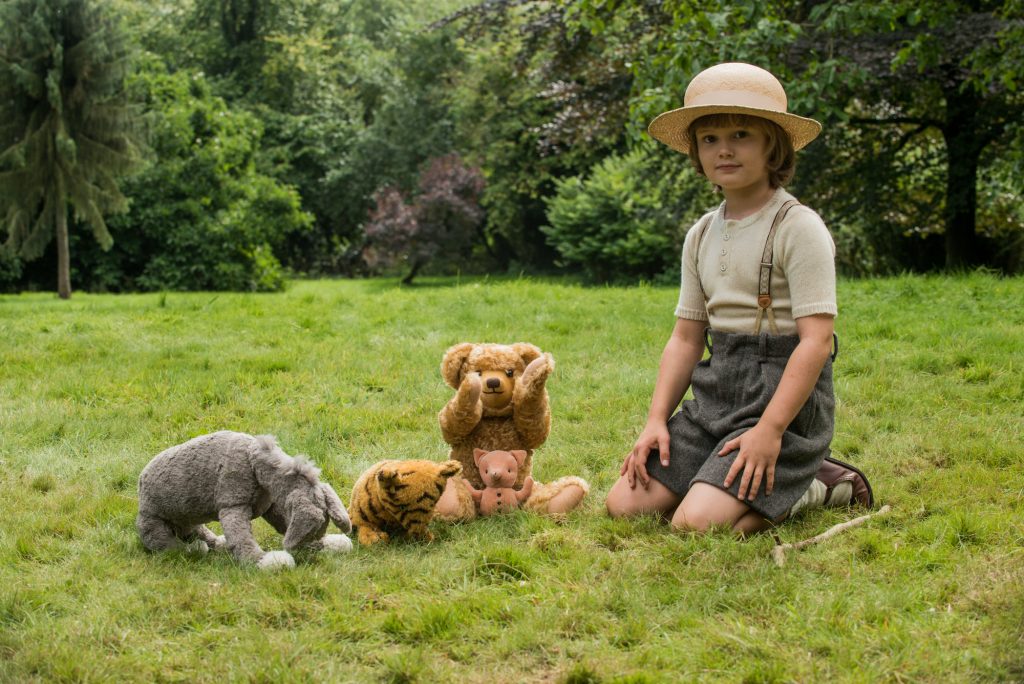
(Photo courtesy: Twentieth Century Fox)
Christopher Robin as the Wounded Child
After the Milnes move to the country so AA may have a quieter life, Daphne escapes back to the city to socialize and attend parties. Christopher Robin’s nanny Olive (Kelly Macdonald), is also absent, caring her ailing mum. Christopher Robin is left alone with his father for two weeks.
The result is surprisingly wonderful – for both. They spend their days playing in the woods. Christopher Robin brings his stuffed animals and he and his dad make up stories about their adventures. But when the two weeks are over, AA decides to write the Pooh books and playtime with his son is over. For good.
“I think what happened to those two was that Milne was suddenly very, very present and felt love for the first time during those two weeks. That’s the beauty of it, the glory, the magical thing that happens. The tragedy is he didn’t know what to do with that. He just reverted to writing, which is fabulous for all of us but very difficult for the little boy.
“Christopher Robin said, ‘I had an absolutely wonderful childhood, but it was very difficult to grow up.’ Which is true of all of us. That’s what intrigued me about the story,” says Boyce.
Other films with the wounded child archetype include Mathilda, Oliver Twist and Harry Potter.
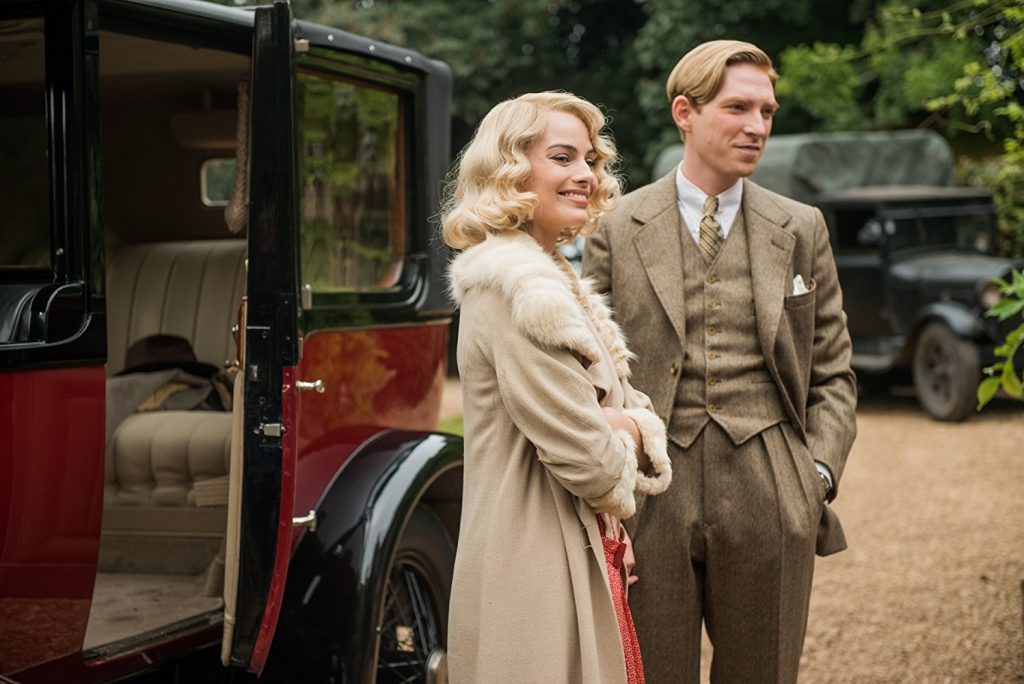
Margot Robbie plays Daphne. (Photo courtesy: Twentieth Century Fox)
Daphne as the Wicked Stepmother
Boyce says the character Daphne was incredibly difficult to write. “We’re incredibly attracted to her, she was very charismatic, people did what she wanted. It was a different time and I think if she had lived a few years later, she would have been the kind of woman who went to work breaking Nazi codes or joined special operations because she just felt strong and invulnerable. Milne was obviously intoxicated with her but she’s obviously a nightmare mother.”
Boyce adds that he respects Robbie for, “Wanting to take on such an unsympathetic character and find some kind of sympathy in it. In the end, isn’t that what art or filmmaking is – finding empathy? She found a way of making us understand Daphne a little bit.”
Other films with the wicked stepmother archetype include Nanny McPhee, The Uninvited and Stepmonster.
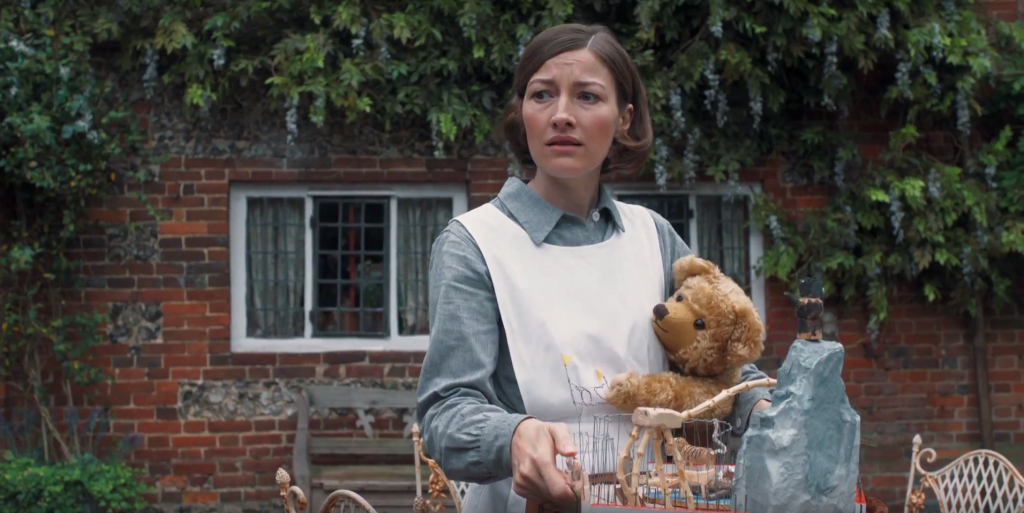
Kelly MacDonal plays Olive in Goodbye Christopher Robin. (Photo courtesy: Twentieth Century Fox)
Olive as the Caregiver
If there is a love story in the film, it’s between Christopher Robin and his nanny Olive. Except for the two weeks Christopher Robin spends alone with his father, Olive is really the only person who loves and protects him.
After the first Winnie-the-Pooh book is published, everyone wants to meet the real Christopher Robin. The little boy’s life becomes about spending long days in the spotlight, meeting unfamiliar children and adults all while cameras flash. Olive stands up to his parents, saying the boy needs to be protected, not treated like a show horse. It does little good, however.
When Olive tells Christopher Robin she’s leaving the Milne home to get married, the seven-year old boy screams, “Marry me!” through tears. He can’t bear to lose her.
“Christopher Robin really, really loved Olive. Children don’t know what to do with that love. We’re so hungry for love when we’re little. He doesn’t know what that means, she’s not his mom. That fear of losing her is always there.”
Regarding the line, “Marry me!” a line that sent me into a sobbing fit, Boyce says, “I wanted to find something that was so passionate, inappropriate, so pathetically wrong. Will acted it so beautifully, there aren’t many child actors who could express anger without appearing brattish.”
Other movies with the caregiver archetype include Mary Poppins, Sound of Music and The Blindside.
Do you ever use archetypes in your screenplays? Let us know which ones you gravitate towards and why.

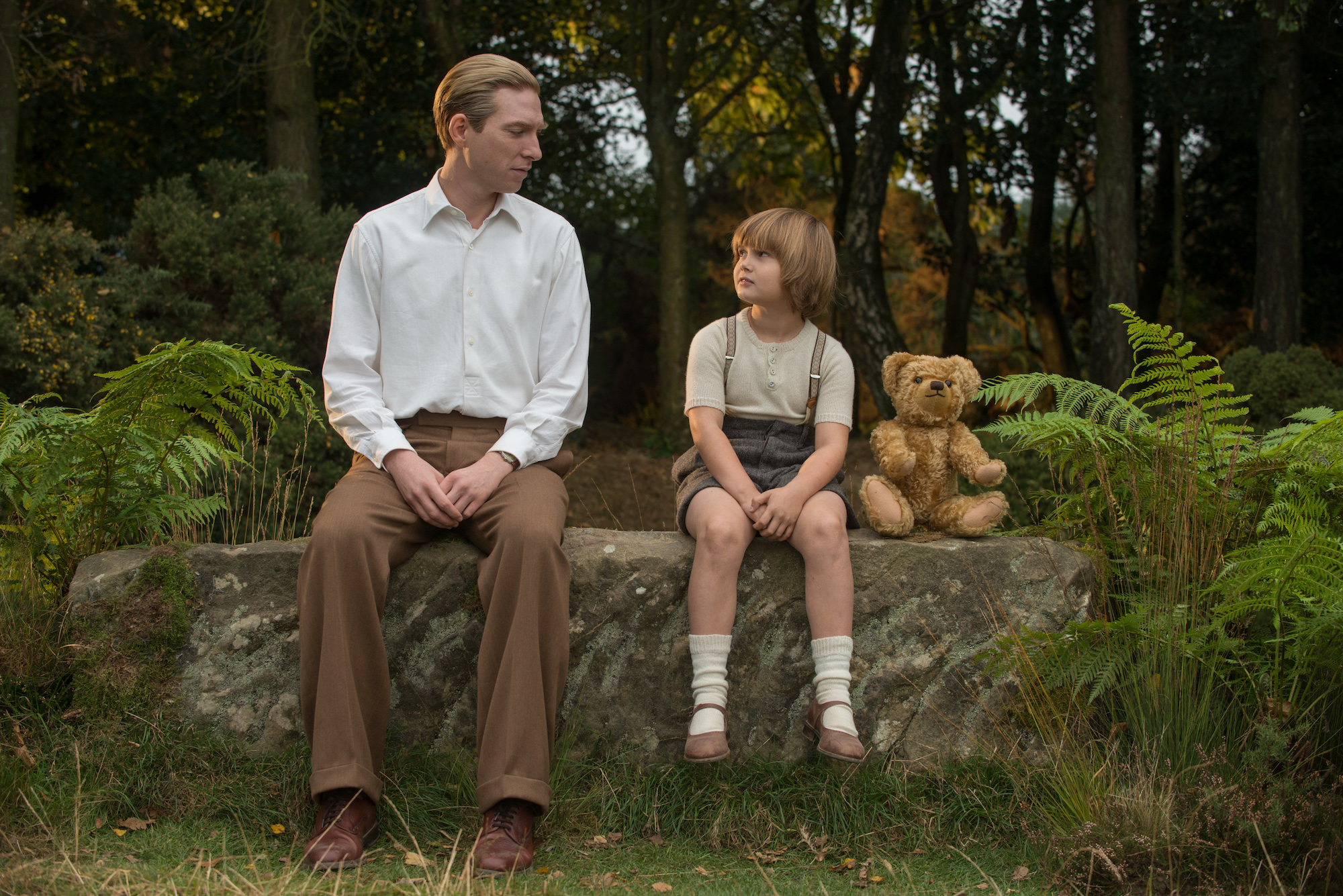


1 Reply to "Goodbye Christopher Robin Writer Breaks Down Characters by Archetype"
TS November 7, 2017 (10:37 am)
Thanks for this article. It seems that for me to understand something as obvious, but complex as the concept of archetypes, it needs to be explored again and again. The way this was written helped a lot, and I look forward to seeing this film now.